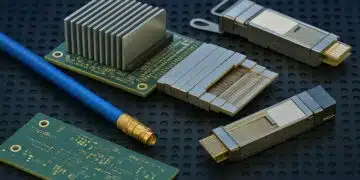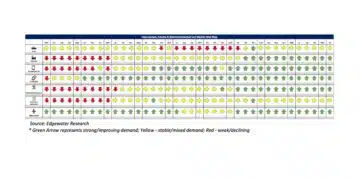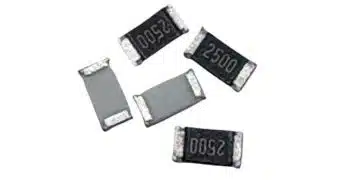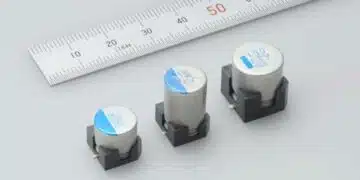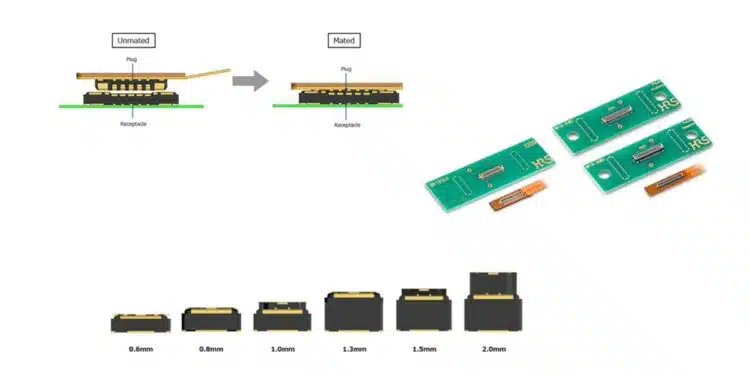Hirose releases new stacking height variations to its BK13 series, board-to-FPC connectors with enhanced space efficiency and functionality for consumer devices.
As smartphones and wearable devices become slimmer and more functional, Hirose has expanded the stacking height variations of the BK13 Series to improve board design flexibility while maintaining high power supply capacity.
The 5A current rating and robust design address the challenges of consumer devices that demand more features in a lighter, more compact form.
Trend and Issues in the Design of Consumer Devices
Innovative products such as smart home appliances and AI-powered devices are emerging to make our daily lives more convenient. These products are expected to be slim, yet packed with features and high performance.
This significantly increases the number of components inside the device, complicating the internal design. At the same time, devices must be more compact and lightweight, making it difficult to arrange wiring components in limited space. Advanced design technology is essential, presenting challenges for developers.
Application examples with BK13 Series:
Smartphones, Smartwatches, Tablet PCs, Drones, E-cigarettes, and Other Consumer Devices
Compact and Wide Stacking Height Variations Increase Design Flexibility
To address these challenges, Hirose has developed new stacking height variations ranging from 0.8 to 2.0mm, while retaining the key features of the conventional 0.35mm pitch product—including 5A power contact support, robust construction, and smooth mating. (Some height variations are still under development.)
By increasing the height beyond the conventional 0.6mm pitch, the risk of interference between multiple components is reduced, enabling greater layout flexibility.
With the BK13 Series, customers gain more options and greater adaptability to meet specific design requirements—making it an ideal solution for a wide range of consumer devices.
*0.8, 1.3, and 2.0mm height products are currently under development. If you have questions about the number of pos. variations, please contact our company sales representative.
Features
- Supports high current in compact spaces
- Rated current: 5A for power contact, 0.3A for signal contact (BK13C) / 0.2A (BK13H)
- Fully armored design prevents damage
- Robust structure protects housing
- Reduces wear during repeated mating cycles
- Multiple solder points improve PCB peeling strength
- Provides stable connections
- Wide self-alignment range enhances assembly efficiency
- Enables smooth mating operation
- Integrally molded plug and receptacle prevent solder wicking
- Ensures high contact reliability
Expansion of Product Development
We plan to further expand the stacking height variations, giving customers a broader selection of products.
| Mass production: 0.6mm, 1.0mm, 1.5mm |
|---|
| In development: 0.8mm, 1.3mm, 2.0mm |
With Hirose’s proven track record in micro connectors and strict quality control, we are committed to delivering high-quality, high-performance connectors that support technological innovation and enhance everyday convenience.



